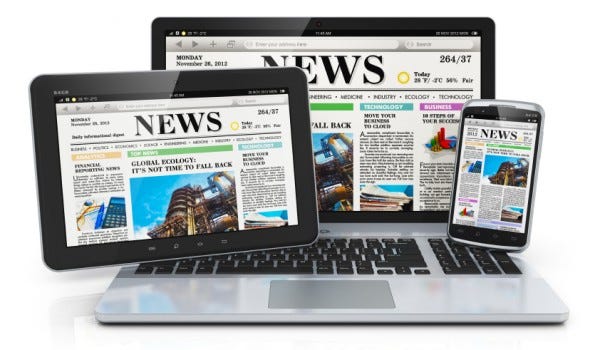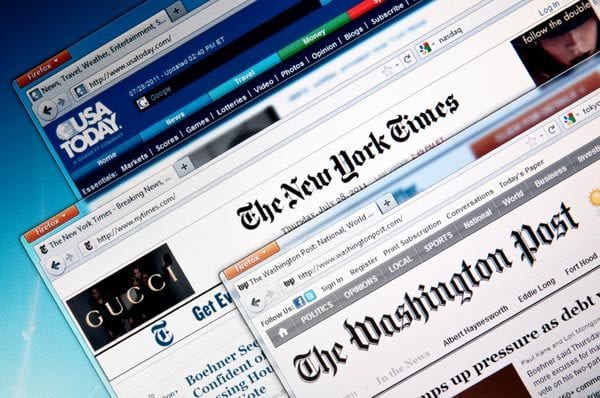How Information Online Is Transforming the Method We Take In Information
In the digital age, the usage of information has actually gone through a seismic change, offering both intricate challenges and unprecedented opportunities. The immediacy of on-line news platforms enables people to access information immediately, tailored to suit individual rate of interests with innovative algorithms. Nevertheless, this benefit increases important concerns regarding the dependability of sources and the potential for bias, as curated content can unintentionally produce echo chambers. As we navigate this evolving landscape, it becomes essential to explore just how these adjustments affect our understanding of the world and the implications for informed decision-making in culture.
Immediate Accessibility to News

With the introduction of electronic technology, the means we consume information has actually undertaken a substantial improvement, offering immediate access to details at our fingertips. This change has actually transformed the traditional information cycle, which as soon as relied heavily on day-to-day newspapers and set up broadcasts. Today, on-line platforms give real-time updates, enabling customers to stay informed about international events as they unravel. The immediacy of electronic news indicates that stories can be reported and shared nearly instantaneously, removing the time lag that was inherent in print and tv media - dw news.
On-line information outlets have exploited on this capability by creating devoted apps and sites that supply damaging information signals directly to our devices. This continuous flow of information makes certain that the public remains engaged and knowledgeable about present events, advertising a more informed culture. In addition, the ease of access of digital news across multiple devices-- tablet computers, mobile phones, and computers-- has actually made it convenient for audiences to access news anytime and anywhere.
Nonetheless, this quick dissemination also presents obstacles, such as the possibility for false information to spread out rapidly. The stress to release promptly can often endanger accuracy, highlighting the need for strenuous fact-checking and liable journalism in the digital age.
Personalized Material Shipment
Tailoring information intake to private preferences has become a specifying function of the electronic media landscape. With the arrival of advanced algorithms and information analytics, news systems are increasingly able to supply material that straightens carefully with customers' rate of interests and reading behaviors. This personalization not just improves customer interaction yet likewise makes certain that consumers are revealed to the most pertinent and timely details.
The process normally entails accumulating data on the customer's past communications, such as posts review, topics of rate of interest, and time spent on different material types. dw news. This data is after that analyzed to anticipate the customer's preferences and to curate a personalized information feed. Therefore, individuals obtain a streamlined flow of details that matches their unique rate of interests, thereby producing an extra effective and enjoyable news intake experience
In addition, individualized material shipment has significant implications for media firms. This strategy likewise increases issues about resemble chambers, where customers might only experience perspectives that strengthen their current ideas.
Interactive and Involving Styles
Embracing interactive and interesting layouts has changed the means audiences eat information online, providing a much more immersive and participatory experience. Interactive components such as clickable infographics, video explainers, and real-time data assimilation promote a deeper understanding of complicated subjects, changing passive visitors right into energetic participants in the news narrative.
Virtual reality supplies an unparalleled level of engagement, carrying individuals into a simulated environment where they can experience tales first-hand. These styles are specifically you could look here reliable in covering damaging information and unfolding events, providing a front-row seat to global occurrences.
The Role of Social Media
Social media's pervasive impact has actually redefined the landscape of information usage, transforming it into a more equalized and interactive experience. Systems such as Twitter, Facebook, and Instagram have actually ended up being central hubs for news dissemination, allowing users to access details instantaneously and share it commonly. This availability allows individuals to not only consume information yet also involve with it, promoting a space where varied voices can add to the discourse.

Social network's algorithm-driven personalization customizes the information experience to specific choices, potentially increasing involvement. Nevertheless, this can likewise create resemble chambers, where individuals are exposed primarily to viewpoints that enhance their current ideas. In spite of this, the role of social media in information usage remains crucial, connecting the gap in between info carriers and audiences, and improving exactly how people connect with information in the digital age.
Obstacles of Online Information
While the electronic transformation of news delivery offers unprecedented ease of access and immediacy, it additionally provides considerable difficulties that make complex the landscape of info consumption. One main problem is the proliferation of false information and disinformation, which can spread rapidly throughout electronic systems. This offers difficulties for consumers in critical reliable resources from those that are less reliable, possibly causing widespread mistaken beliefs.
The speed at which information is provided on-line commonly prioritizes timeliness over precision. In the race to be first, some electrical outlets might publish unproven information, which can later on prove to be wrong, wearing down public trust in media. Furthermore, the resemble chamber effect, promoted by algorithms that customize content to individual choices, can strengthen existing predispositions and restriction direct exposure to diverse point of read views.
Money making techniques better complicate the landscape. The dependence on advertising profits incentivizes sensationalism and clickbait, overshadowing substantive journalism. Paywalls, while needed for economic sustainability, can restrict access to top quality news, intensifying details inequality.
Conclusion
The makeover of news usage via on the internet systems has considerably modified info gain access to and involvement. Instantaneous access, customized web content, and interactive layouts enhance the user experience, while social networks amplifies reach and immediacy. Despite these improvements, obstacles such as false information and echo chambers position considerable worries, possibly deteriorating count on reputable resources and restricting direct exposure to varied perspectives. A balanced method is vital to harness the advantages of online news while alleviating its intrinsic threats.

As an outcome, individuals receive a streamlined circulation of info that matches their distinct interests, thereby creating an extra reliable and gratifying information intake experience.
Platforms such as Twitter, Facebook, and Instagram have come to be main hubs for information dissemination, allowing customers to gain access to information promptly and share it commonly. In spite of this, the role of social media in information usage remains crucial, connecting the gap in between info suppliers and target markets, and reshaping how people connect with information in the digital age.